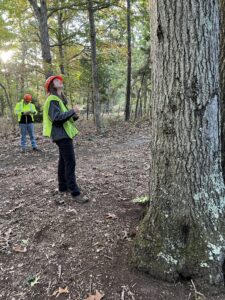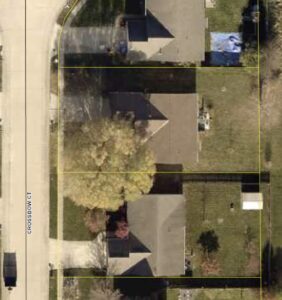In general, most people love trees. Whether in our backyards, parks, or lawn strips, we understand the value of trees and the enormous benefits they provide for us every day. Air quality enhancement, water protection is especially important to Hoosiers. According to recent reports, Indiana ranks 46th in air quality and 39th in water quality. Trees can help improve those numbers as one of the best biological machines! Other benefits include energy conservation, wildlife habitat, better aesthetics, and a sense of community – these are all values that trees can give.
So, for many of us, we are somewhat disheartened when we realize that not all people view trees with the same enthusiasm or support. Some see trees as a “nuisance” – sources of leaves and needles or shade to “spoil” a perfect lawn. Some see trees as “interfering” with their property, or to develop a property for a new home or other building, or to widen a road.
The dilemma is that while all trees live on “someone’s property (a municipality, utility company easement or individual), the benefits that they provide do not recognize property boundaries. In other words, your tree, your neighbors’ tree, your neighborhood park’s tree, or your urban forest are all affecting everyone’s life in many ways. So, when someone proposes cutting them down people can get upset and feel compelled to take action.
That is where city foresters and non-profit organizations who focus on managing public trees can help. They are there to help with questions and issues regarding imperiled trees. They encourage anyone who seeks to protect trees in their community to support those organizations and learn more about programs that improve community trees.

The city forester or other government official in charge of public trees serve to protect our community forest.
Steps in Tree Protection
There are some basic steps in the protection of trees, most of which involves your local resources.
Step 1
There are several basic tools that every municipality should have in place to protect its trees. These include:
- Implementing the best management practices for urban forests
- Formulating a strategic plan for the management of the urban forest
- Administration of a tree policy or ordinance
- Mandate permits for any work to be completed on public trees
- Preparing a registry of heritage trees
- Ensuring that qualified personnel be in place for oversight of tree protection laws
- An informed tree board or committee composed of stakeholders who help with protecting and enhancing the urban forest.
If your municipality does not have these tools in place you should work with your local university extension specialist or contact an ISA Certified Arborist to find more resources. Additionally, the Society of Municipal Arborists can provide resources on urban tree management.
Step 2
Get to know your municipal and elected officials to ensure prompt action when tree work is not implemented according to best practices, tree ordinance violations are identified, or work is not properly permitted according to local laws.
Step 3
Be informed on the situation before initiating any action regarding tree issues:
- Establish ownership of the tree; who’s tree is it? Check local GIS resources.
- Is it against your community or city tree policy? Check for permits as required.
- Does it make arboricultural (tree) sense? Consider if there is a nuisance issue or risk concern that may not be identified or overlooked.
- Communicate with the tree owner or manager to determine if the assessment and mitigation being implemented is according to best management practices?
It is important that we all work to protect and enhance our urban forests and community trees by recognizing the resources available to us. Trees in our cities are critical to our quality of life and as stewards of our environment, we must be vigilant for the many issues that imperil our community trees. For more information visit:
Indiana Arborist Association

